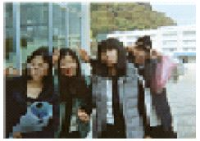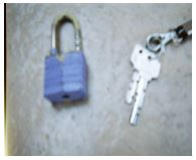PURPOSE Through analysis, this study reports on occurrences of children and adolescents’ sports accidents and presents measures to prevent, cope with, and manage school sports accidents. METHODS The study used both quantitative and qualitative methods. First, a frequency analysis was conducted using 284,429 safety accident data of the School Safety and Insurance Association (SSIA). Second, the inductive analysis method was applied to in-depth interviews conducted with eight teachers. RESULTS , accidents are characterized as follows: 1) At the school level, accidents have increased significantly every year in a large proportion of elementary and middle schools. 2) The span of time spent on sports was large. 3) Accidents happened at playgrounds and auxiliary facilities. 4) Accidents happened during kindergarten play and ball sports in schools. 5) The descending order of days with the most accidents was Thursday, Tuesday, Friday, Wednesday, Monday, Saturday, and Sunday. 6) Rather than a certain month, accidents happened across the school semester. 7) Most accidents occurred from 10 a.m. to 2 p.m. Second, field teachers’ stories were categorized into the following topics. 1) School accidents can occur anytime, anywhere. Whether mild or serious, they still had the burden of inevitable accidents. 2) Required: were prompt response and handling by appropriate teachers; timely treatment and recovery cost support; also procedurally simplified handling by SSIA was helpful. 3) Avoiding accidents requires the following:: regular operation of safety education programs; daily promotion of teachers’ preventive observation and close guidance; and active role reinforcement of SSIA and policy support. CONCLUSIONS Finally, measures to prevent, cope with, and manage school safety accidents were proposed.

Purpose and Methods The purpose of this study is to clarify the concepts of ‘youth sport policy’ and policy areas as an alternative to school physical education concept and to provide a core conceptual framework for the development and implementation of youth sports policy in the future. Results The notion of youth sport policy is a process of seeking rational decision-making and optimal alternatives to solve the social problems associated with sports participation of youth in elementary school(aged 6 years) to high school(aged 18 years). The concept of 'youth sport' can reflect modern culture rather than 'school physical education' and it can be seen as more future oriented for lifelong participation in sports. The areas of youth sport policy are classified into physical education, school sport, and community sport. Physical education refer to the physical education classes operated by the Ministry of Education, and the school sport refers to the sports activities that take place throughout the school. Community sport is sports activities that are carried out outside the school by the choice of youth, which is the area where cooperation between the public sector and the private sector is needed. Conclusion In conclusion, healthy and active life for youth is required to establish cooperative governance of related organizations in order to ensure proper linkage between youth sport policy areas. Through this, it is necessary to solve the social problems of youth and promote their lifelong enjoyment of sport more consistently, efficiently and effectively.

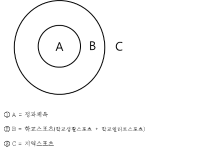
Purpose Incidence and prevalence of Korean teenager cheerleading injuries were surveyed. Methods A total of 769 junior cheerleaders who participated in National Sport Cheerleading Competitions responded to a questionnaire, and 435 reported experiences of injuries. Results Risk factors for injury included older age (p<0.001), increased experience (p<0.001), and higher BMI (p<0.05). The most frequent injury occurred at wrist, ankle, knee, shoulder and waist. And the most responded types of injury were muscular pain and contusion. Cheerleading experience affected on injury prevalence. They were injured when they perform Elevator (<0.5 yrs), Cradle (0.5-1 yrs), Cradle and Basket toss (1-2 yrs), Cradle and Pyramid (2-3 yrs). These techniques involved in bodily movements of going up and cradle. About 56% of injury was treated at home or not treated at all, and 60% of injury was either self-treated or not intervened. And only 32% of cheerleaders practiced on a formal mattress. Conclusion Safety measures for these youth cheerleaders are necessary and guidelines for securing safety and preventing and treating injuries for these population are urgent.
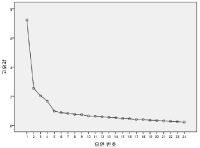
Purpose The purpose of this study was to develop the sport 5C scale of the Korean version. Methods The participants were 772 high school students from 17 to 19 who participated in sport regularly. The validation of Sport K-5C followed a three-step validation procedure through substantive stage, structural stage, and external stage. Results First, In the substantive stage, Sport K-5C consisted of 50 items with 5 factors. Second, in the structural stage, although Sport K-5C was explored as 24 items with 4 factors by EFA, but as a result of CFA, Sport K-5C was confirmed as 24 items with 5 factors. Third, the external stage provided additional validity through correlations of tests with other questionnaires which are similar concept and opposite concept, and group differentiation. Conclusions Sport K-5C is composed of 5 factors and 24 items. The factors are Caring, Character, Confidence, Competence, Connection. This scale can be used to provide an objective evaluation of positive development of youth in sport and physical education context.

PURPOSE Sport pedagogy (SP) has established itself as a subdiscipline in Human Movement Studies since the 1970s. It has become an academic labyrinth as a result of its rapid flourishing. Most researchers are extremely confused about this disorderly research complex. This study aimed to evaluate the characteristics of SP in stages in the western (mostly English speaking) countries. METHODS Analysis of literature published in English from 1990 to 2022. RESULTS The developmental versions were divided as follows: SP1.0 is positivistic in nature, SP2.0 is multi-paradigmatic as it includes all paradigms, and SP3.0 (current version). Many academic journals have been launched, and a variety of books on divergent topics are being published. Currently, research has exploded. In SP3.0, research performed by British scholars are notable in terms of number and quality, overpowering those by scholars in the USA and other countries. Youth sport and sport coaching are regarded as new legitimate areas. Additionally, signs for SP4.0 have been indicated. CONCLUSIONS In order to find way outs in the SP labyrinth, it is necessary to recognize the current research trends in international SP.
The purpose of this study was to examine the current status of school sport club(SSC) participation and to explore relationship between school sport participation and positive youth development. In order to do this, a survey was conducted with 403 elementary, middle, and high school teachers who are currently taking charge of SSCs, and also individual interviews were conducted with 22 students. In addition, the youths' developmental asset questionnaire was administered with 412 middle school students. The survey results from 403 teachers showed that SSCs have potential to contribute to positive youth development because teachers are placing an emphasis on character development as well as physical and social development through SSC activities. In addition, participants who regularly participate in physical activities had higher internal and external developmental assets than non-participants or irregular participants. Specifically, students participated in SSC more than twice a week had higher internal and external assets than students participate once a week. In addition, participants who engage more than one hour per session had higher internal and external assets except constructive use of time and social competence. Discussion and implications for organizing SSCs to provide developmental contexts and contents for positive youth development were provided.
PURPOSE This study aimed to examine the effects of motion analysis and image training using self-modeling with visual cues on the skill performance, imagery, and sports confidence of adolescent female soccer players. METHODS The participants were elite soccer players from two girls’ high school soccer teams divided into an experimental group (D girls’ high school, n=16) and a control group (I girls’ high school, n=13). The experimental group underwent motion analysis and image training when performing penalty kicks, short kicks, and long kicks using self-modeling with visual cues, while the control group underwent training using self-modeling videos without visual cues. Before and after the training, the evaluation score was calculated according to kick performance, and the imagery and sports confidence factors were measured. For the statistical analysis of all collected data, descriptive statistics, the Friedman test, the Mann-Whitney U test, and two-way repeated-measures analysis of variance were used. RESULTS First, on the motion analysis using self-modeling with visual cues, the experimental group’s penalty kick and short kick scores were improved and differed significantly, but no significant change was noted in long kick score. Second, as a result of image training using self-modeling with visual cues, all visual, kinesthetic, mood, and controllability factors of the experimental group improved except for the auditory factor, and the interaction effect was confirmed. In addition, the stated sports confidence of the experimental group was improved and the interaction effect confirmed. CONCLUSIONS The analysis of kick motion using self-modeling with visual cues was effective for the penalty kicks and short kicks of adolescent female soccer players. Moreover, this study confirmed that the analysis of kick motion improved the visual, kinesthetic, mood, and controllability sub-factors of imagery and significantly affected the players’ stated sports confidence.
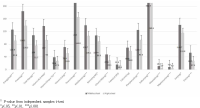
Purpose This study aimed to evaluate the nutrient intakes and diet quality of national youth badminton players participating in summer camp training in 2016. Methods Total of 40 middle school players and 60 high school players were included in the study. Two players with skipped meals were excluded from the final target. Food intake data for the 3-day using 24-hour recall method were obtained and analyzed using the CAN-pro 5.0 (Web ver. Korean Nutrition Society, Korea). Differences in nutrient intakes and diet quality were compared between middle school players and high school players using independent samples t-test. Results Intakes of vitamin C, vitamin E, vitamin B6, folic acid, calcium, chloride, magnesium, and zinc in both groups were lower than (RNI) recommended intakes of KDRIs. On the other hand, intake of sodium significantly exceeded the recommended nutrient intake (RNI) of KDRIs in both groups. The NARs (Nutrient Adequacy Ratio) of vitamin C, vitamin B6, folate, calcium and zinc were less than 0.75 in both groups. The NARs of 11 nutrients except for folic acid were significantly lower in high school players. The MAR (Mean Adequacy Ratio) of middle school players was 0.78, significantly higher than 0.64 of high school players. The INQs (Index of Nutritional Quality) of vitamin C, vitamin B6, folic acid, calcium and zinc were less than 0.75 in both groups. The INQs of vitamin A, vitamin B6 and zinc were significantly lower in high school players. On the other hand, the total DDS (Dietary Diversity Score) of high school players was 3.88, significantly higher than 3.29 of middle school players. The DDS of fruit group as well as milk and dairy group were particularly low. Conclusions The results suggest that balanced diet managed by professional dieticians along with nutrition education should be implemented to improve nutrients intake and diet quality of national youth badminton players.

PURPOSE This study aimed to investigate the effects of COVID-19 on elite youth athletes by investigating their activities and eating habits before and after the COVID-19 pandemic. METHODS This study included 917 elite adult athletes from 19 sports and were grouped into 6. The questionnaire included items regarding demographics, physical activity, sleep, and eating habits before and after COVID-19. A total of 44 questions requiring subjective short answers were included. Statistical significance was set at p< 0.05. RESULTS After COVID-19, vigorous and moderate activity decreased across all sports; however, light activity increased in almost sports. Time spent sitting increased across all sports. The difference in the number of meals consumed varied among sports, and the number of competitions decreased in all sports. CONCLUSIONS The COVID-19 pandemic appears to be finished but has not ended yet. Athletes must determine the best way to maintain their physical, physiological, and psychological states close to their original abilities. Determining this will provide the greatest impact on the return of athletes after COVID-19; this study will be helpful.

Recently, there have been diverse types of physical activities supported by government policy in S. Korea. However, these activities may not be effective if they do not reach to moderate to vigorous level. This study designed school physical education system based on SPARK program, which include traditional physical education, sports club based physical activity, after school physical activity, and Saturday physical activity, to evaluate its effectiveness associated with physical fitness and empirical meanings of physical activity. This study employed a mixed method research paradigm for better understanding. Among various mixed method paradigm stances, this study employed "blending strategy" for complementary analysis. First of all, the effectiveness in health condition was evaluated by quantitative data. Specifically, physical fitness and lifestyle were analyzed by Helmas, IPAQ, and Accelerometer respectively. Second, empirical meanings of physical activity were analyzed by both Photovoice and in-depth interview which are qualitative research method. The result of this study first showed that a specially designed school physical activity program based on the SPARK contributed to improve students' physical fitness and lifestyle as well, however, there were important differences between male and female students. Second, physical achievement, alteration of spatiotemporal meaning, and change of societal relationship emerged as important themes. Further, these themes showed that they played an important role to maintain students' motivation in physical activity and consequently physical activity promotion was invigorated in school. Based on these results, we synthesized investment factors and process factors and outcome factors respectively. Finally, we suggested alternative teaching methods and suggestions for following research to overcome gender issues.





